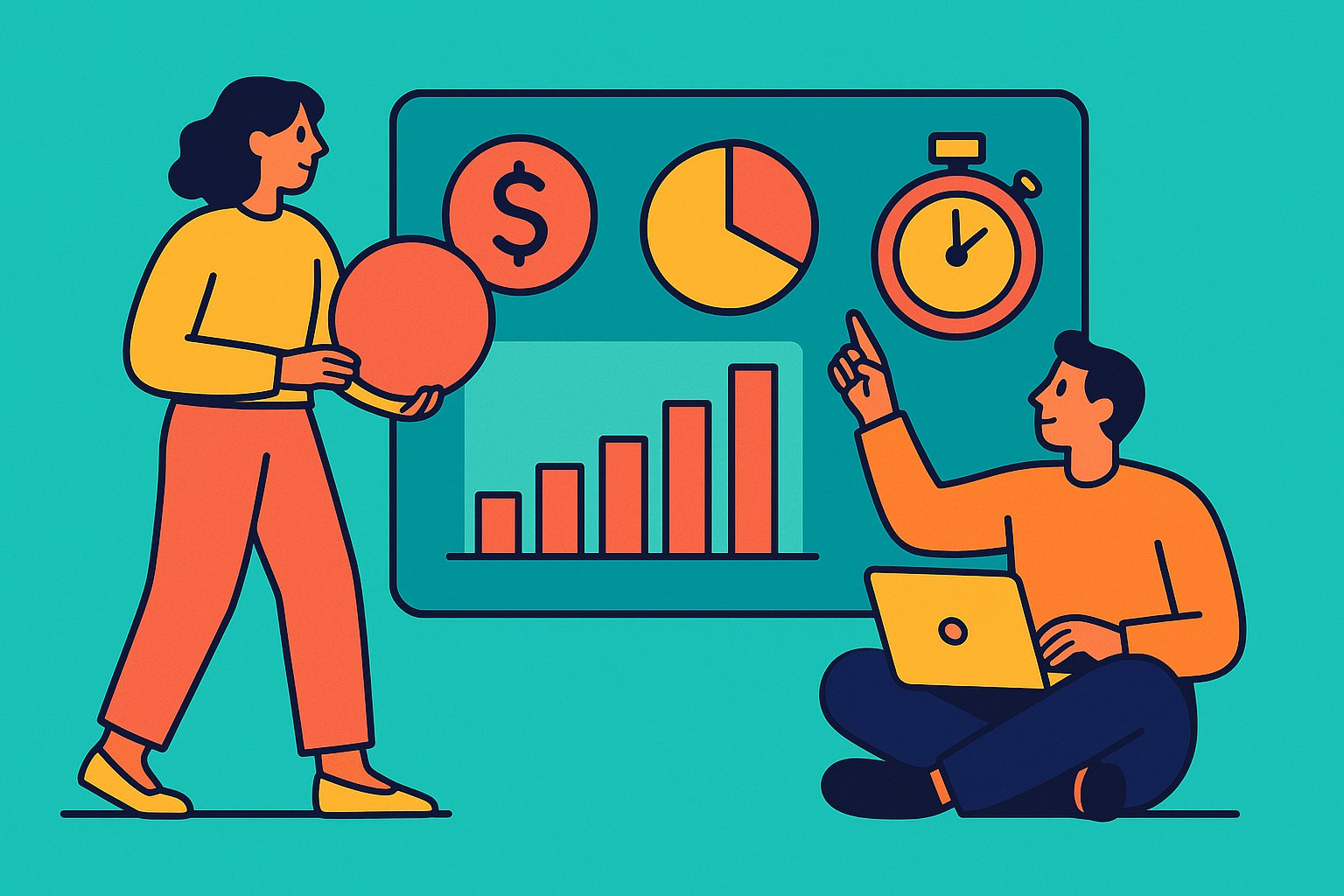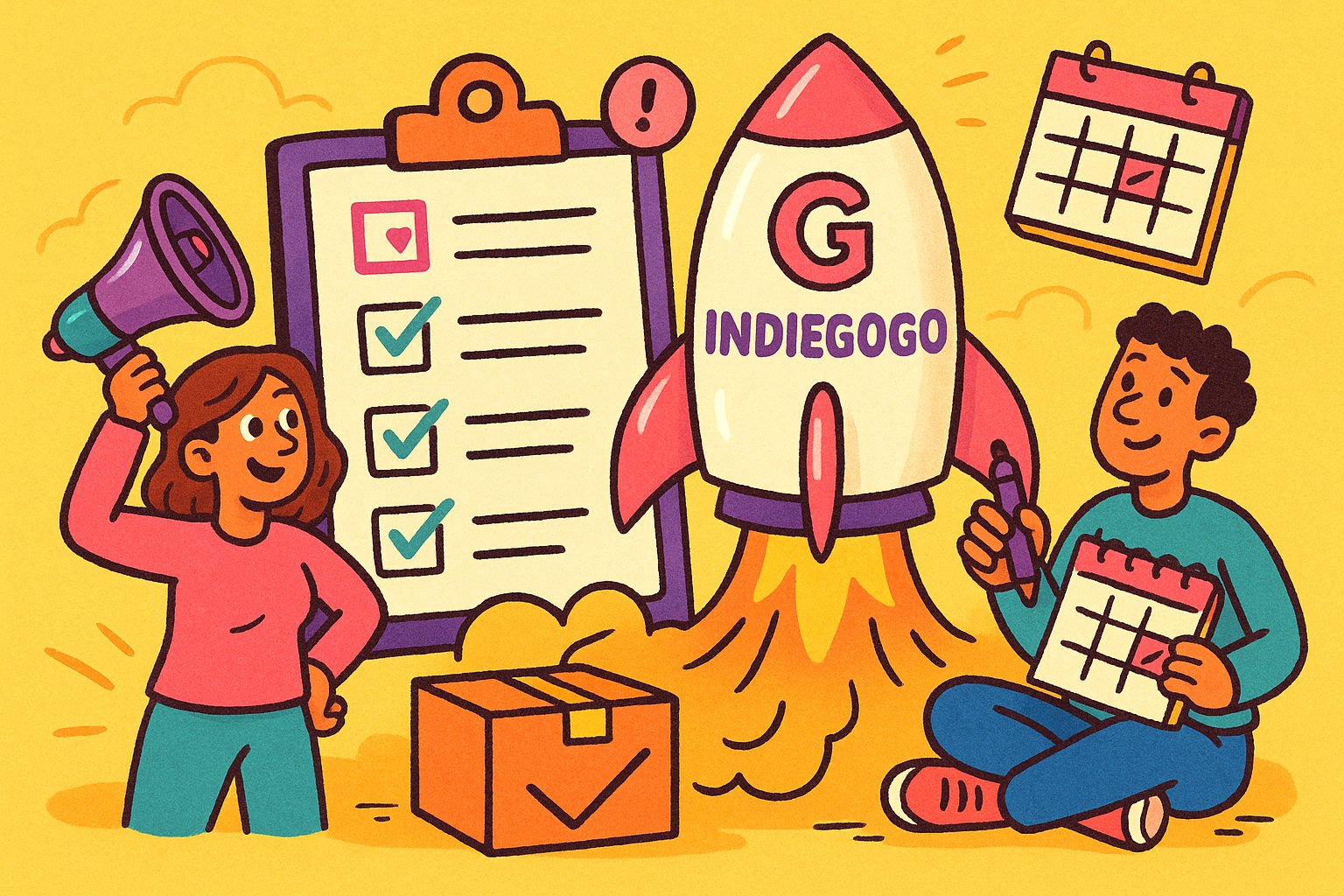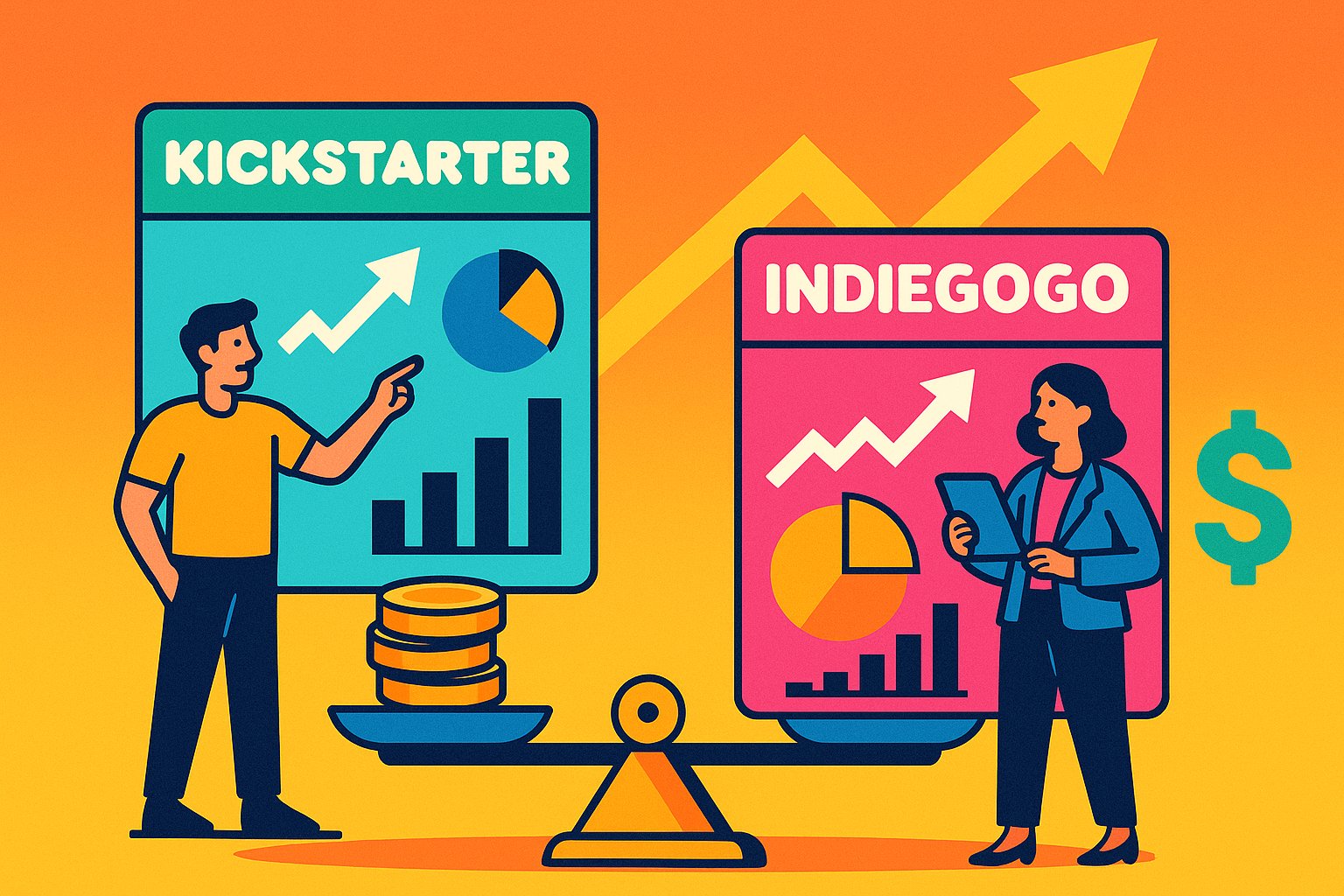Charting the Next Wave: Why 2025 Matters for Kickstarter Categories
As Kickstarter continues to evolve in 2025, creators and backers alike find themselves at the intersection of technological breakthroughs, evolving cultural values, and shifting consumer demands. No longer a niche platform solely for indie artists or fledgling hardware startups, Kickstarter has become a barometer for broader trends—reflecting what communities want, what innovations capture the imagination, and how social consciousness shapes creative endeavors. In 2025, more than ever, understanding which categories are on the rise can be the difference between launching a campaign that sputters and one that ignites. Emerging AI-driven products, eco-conscious designs, immersive gaming experiences, and health-forward innovations are all vying for attention. Trends that seemed peripheral just a few years ago are now core to backer appetites and platform algorithms.
For creators contemplating their next project, aligning with these trending categories is not a matter of chasing fads; it’s about tapping into the zeitgeist—solving real problems, responding to societal shifts, and delivering novel experiences that resonate with today’s interconnected audiences. Likewise, backers scanning the Kickstarter homepage in early 2025 will see pulsating campaign meters in categories that echo larger global conversations: sustainability, wellness, interactive entertainment, and social impact. These trending sectors don’t just capture pledges; they galvanize communities, spark media coverage, and often lead to off-Kickstarter growth via media placements, retail partnerships, or even VC interest. In this opening exploration, we’ll contextualize why 2025 represents a watershed moment for Kickstarter’s ecosystem—where creative ambition meets demand for conscious innovation—and preview the specific categories poised to define crowdfunding success in the months ahead.
Artificial Intelligence and Next-Gen Tech Innovations
Artificial intelligence (AI) has transcended its buzzword status to become a pervasive force across industries. In 2025, AI-driven Kickstarter campaigns are no longer obscure prototypes; they’re fully realized products that democratize access to advanced machine learning, robotics, and automation. Backers today gravitate toward gadgets that not only incorporate AI but also solve tangible problems—whether that’s a home-assistant robot that adapts to nuanced human behaviors or a wearable device that uses machine learning to optimize daily routines. Visible success stories from 2024, such as advanced drone systems capable of real-time environmental analysis, have paved the way for new entrants. In turn, these proven use cases embolden creators to experiment with AI in niche contexts: personal mental health companions, AI-powered creative tools for artists, and even retinal prosthetics that leverage neural networks to restore vision.
One reason AI-centric campaigns are trending is backer confidence: seeing real-world applications and early adopters amplifies trust. Creators who furnish transparent roadmaps—demo videos that showcase functional prototypes, detailed breakdowns of training data, and explicit privacy safeguards—tend to enjoy more robust initial funding surges. In 2025, AI campaigns need to do more than flash futuristic tech; they must articulate a clear value proposition that addresses daily pain points. Whether that means a smart home sensor that preempts energy waste or an on-the-go language translator that adapts to local dialects, the emphasis is on usability and ethical design. Moreover, open-source AI frameworks and affordable hardware components have lowered the barrier to entry for would-be inventors. As a result, Kickstarter’s Emerging Tech category is brimming with modular robotics kits, AI-driven micro-farms for urban dwellers, and personalized skincare analyzers that harness computer vision. For prospective creators, the lesson is clear: success lies in coupling novelty with pragmatism—demonstrating how AI can tangibly improve everyday life rather than simply showcasing cutting-edge algorithms in abstract lab settings.
Sustainable Innovations: Eco-Conscious Creations Take Center Stage
In 2025, climate anxiety and environmental stewardship shape not only policy debates but also consumer choices. Kickstarter campaigns that foreground sustainability are surfacing as perennial crowd-pleasers. From packages printed on recycled paper infused with flower seeds to solar-powered portable devices that charge anywhere, backers prioritize projects that minimize ecological footprints. Trend data shows that campaigns flagged as “green” or “zero-waste” receive significantly more pledges per update than generic counterparts—testament to a growing cohort of eco-conscious backers eager to invest in planet-positive solutions. Whether it’s modular furniture made from repurposed plastics, biodegradable kitchen gadgets, or vertical-farming home systems, the unifying thread is a transparent supply chain and measurable impact: backers want to know exactly how recycled materials are sourced, how manufacturing emissions are minimized, and whether end-of-life recyclability is guaranteed.
Sustainable innovations also intersect with broader lifestyle trends—such as minimalism, ethical fashion, and conscious travel—pushing Kickstarter into domains that blur the lines between product and lifestyle brand. A campaign for vegan leather bags might showcase an elegant backpack made from cactus fibers, spotlighting both artisanal craftsmanship and a low-carbon manufacturing process. Another campaign could unveil an energy-harvesting backpack that converts your daily commute into electricity for USB devices—encapsulating both eco-innovation and urban mobility. In 2025, the emphasis is on authentic storytelling: impactful backers respond to immersive videos that tour the bamboo plantations where fabrics are grown or documentary-style clips showing how artisan communities benefit from fair-trade relationships. As a result, Kickstarter’s Sustainability and Eco-Friendly categories have become incubators for scalable solutions: from community-based upcycling hubs to carbon-negative consumer electronics. For innovators, aligning with this renewable spirit means going beyond lip service—conducting LCA (Life Cycle Assessment) audits, seeking third-party eco-certifications, and demonstrating a circular economy mindset that recycles or repurposes every component. In an era where planet-centered pledges are more than marketing ploys, sustainable creators who weave environmental ethics directly into their value proposition are those who not only meet their Kickstarter goals but set new standards for community-driven impact.
Immersive Games and Interactive Play Experiences
The gaming industry has always been fertile ground for Kickstarter campaigns, but 2025 marks the year when immersive, cross-platform experiences truly take flight. Virtual reality (VR) and augmented reality (AR) have matured beyond novelty demos, presenting backers with playable demos that blend digital and physical worlds. Tabletop enthusiasts who once backed board games with static cards now seek “phygital” experiences where physical miniatures interact with companion apps powered by AR overlays. Kickstarters for innovative RPGs feature embedded NFC chips on character cards, unlocking dynamic story arcs in real time as players move through a custom-designed gameboard. Meanwhile, independent VR developers are raising significant funds for narrative-driven experiences that require minimal hardware—for instance, projects compatible with widely available smartphone-based VR headsets, democratizing access and lowering backer entry thresholds.
As multiplayer experiences grow in demand, Kickstarter’s Gaming category shows a notable uptick in campaigns aiming to deliver hybrid live-action role-playing (LARP) kits—complete with wearable tech that tracks player locations and health points. One standout campaign from late 2024 combined physical “quest chest” unboxings with an online portal that updated quests based on global player feedback. In 2025, this interactive approach has become a blueprint: backers pledge not just for a game set but for the promise of evolving storylines and community-driven expansions. Successful campaigns spotlight early backer involvement— inviting playtesters to exclusive Discord channels and offering personalized quest consultations. They also leverage modular design: base-game pledges ensure fundamental components arrive swiftly, while stretch-goal expansions introduce new narratives, characters, and digital loot.
The appeal of immersive gaming extends to educational and social impact realms. Campaigns for coding kits integrate programmable micro-controllers that teach backers STEM principles through gamified puzzles, while eco-gaming projects turn environmental data into interactive gameplay, encouraging players to reduce their carbon footprint in real life. Conversely, art-driven interactive experiences—like gallery installations that tour with AR companion apps—capture the crossover between gaming, art, and technology. In all cases, Kickstarter campaigns in 2025 hinge on showcasing playable prototypes: GIFs of in-game mechanics, brief VR demos, or walkthrough videos of LARP events. By offering immediate glimpses into the experience, creators build anticipation and trust. As consumer expectations shift toward deeper, multi-sensory engagement, campaigns that deliver tangible, interactive prototypes stand at the forefront of Kickstarter’s gaming renaissance.
Health, Wellness, and Life-Enhancing Tech
The convergence of personal wellness and wearable technology has emerged as a defining force on Kickstarter in 2025. Backers are no longer content with step counters or generic fitness trackers; they’re seeking specialized devices that address unique health metrics—heart rate variability monitors for stress management, smart compression sleeves that track muscle recovery, and AI-driven meditation pods that adapt soundscapes to real-time biometric feedback. Crowdfunding campaigns spotlight wearables that integrate seamlessly into daily life: smart rings measuring sleep stages and blood oxygen, or posture-correcting shirts that vibrate gently when back alignment slips. These innovations combine convenience, aesthetics, and rigorous data analytics, positioning wellness tech as a lifestyle imperative rather than a passing trend.
Beyond wearables, 2025 sees a surge in low-cost diagnostic tools designed for at-home use and global health applications. Kickstarter campaigns for portable, 3D-printed diagnostic devices—capable of conducting rapid blood tests for anemia or monitoring blood sugar levels—exemplify a democratization of medical technology. These devices often pair with smartphone apps to visualize results, share data securely with healthcare providers, and generate personalized health recommendations. In a post-pandemic world, backers value preventative health measures more than ever: campaigns emphasizing telehealth integrations and remote monitoring appeal to both wellness enthusiasts and those managing chronic conditions. Moreover, mental health campaigns that fuse technology with therapy—such as VR-based exposure therapy kits for anxiety or biofeedback headbands that train mindfulness—underscore the shift toward holistic well-being.
Wellness also extends to nutritional and lifestyle products. S mart kitchen devices—like precision nutrient analyzers that assess meal composition based on molecular spectroscopy—have gained traction, promising backers tailored dietary guidance. Campaigns for biodegradable meditation cushions embedded with sensors to track posture and breathing rhythms demonstrate how everyday items transform into proactive health tools. Successful creators frame their campaigns around evidence-based research, partnering with medical institutions for validation and providing transparent data on efficacy. Early prototypes must pass initial safety and usability tests before crowdfunding, instilling backer confidence. By integrating health, science, and technology, Kickstarter campaigns in the wellness category not only tap into a booming market but also align with a societal shift toward prioritizing personal well-being and preventive care—making 2025 an inflection point for life-enhancing tech.
Strategies for Creators: Launching a Campaign Aligned with 2025 Trends
With these dynamic categories in mind, creators preparing for a 2025 Kickstarter launch must adopt strategies that align with emerging backer expectations. First, authenticity and transparency are non-negotiable. Whether you’re unveiling an AI-driven device or an eco-friendly lifestyle product, provide clear, concise explanations of your development process—prototype testing, supply chain sourcing, and risk mitigation. Offer backers a window into your operations with behind-the-scenes videos, transparency audits, or infographics that map production timelines. This level of open communication builds trust and reduces backer hesitation, especially when campaigns involve new or complex technologies.
Second, prototypes and minimum viable products (MVPs) should be web-ready well before launch. Backers in 2025 expect to see functional demos—glimpses of an AI algorithm processing real-time data, AR overlays enlivening static images, or nutrition analyzers reading food samples in seconds. These interactive previews demonstrate proof of concept and signal to backers that you’re more than a dreamer; you’re a doer. When possible, release limited beta kits to small groups—either through a previous campaign or closed-door testing—to collect early feedback, iterate rapidly, and refine your campaign pitch. Integrating these refinements into your Kickstarter page—“Here’s how we improved battery life by 20% after early backer trials”—conveys responsiveness and readiness.
Third, community engagement must extend beyond campaign updates. Establish branded social channels—Discord servers, Slack workspaces, or dedicated subreddits—where backers can share feedback, troubleshoot issues, and co-create features. Tasks like naming prototypes or voting on design variations create a sense of ownership. Consider hosting virtual “fireside chats” or monthly livestreams where you tackle user questions, showcase development progress, and introduce new stretch-goal concepts. As your campaign unfolds, gather user-generated content—unboxing videos, prototype test results, or creative use cases—and feature them prominently on your page, demonstrating real-world traction.
Fourth, partnerships and collaborations can fast-track visibility. Align with influencers, relevant nonprofits, or educational organizations whose missions dovetail with your project. An eco-friendly product might collaborate with a prominent environmental NGO to offer backers exclusive digital resources on sustainable living, while a wellness gadget could partner with a fitness ambassador to demonstrate practical use. These partnerships not only amplify your reach but also lend third-party credibility, signaling that established entities endorse your vision.
Finally, integrate post-campaign planning into your initial roadmap. Kickstarter trending categories in 2025 won’t just fund your project; they often catalyze broader initiatives—retail launches, B2B licensing deals, or expanded product lines. Outline contingency budgets, manufacturing pipelines, and marketing funnels that transition from crowdfunding to commercial viability. For example, if you’re raising funds for a modular maker kit, build in plans to develop an online educator platform post-campaign, supplying lesson plans and remote workshops to expand your educational footprint. By anticipating these next steps, you reassure backers that their support doesn’t vanish when pledging ends; rather, it sparks a sustainable enterprise rooted in community impact.
Looking Ahead: Harnessing 2025 Trends for Lasting Impact
The momentum of Kickstarter’s trending categories in 2025 represents more than a snapshot of fleeting interests; it reflects deeper societal currents—our collective yearning for sustainable solutions, immersive experiences, empowered creativity, and proactive well-being. Campaigns that resonate most deeply in this climate do more than promise innovation; they deliver a participatory vision of the future, inviting backers to co-create, validate, and champion advancements that matter. As you contemplate your next Kickstarter endeavor, keep the following guiding principles at the forefront: align your project with emerging societal needs, ground your funding goals in rigorous research and prototype validation, craft an immersive brand narrative that spans digital and physical realms, and engage backers as collaborators rather than mere consumers.
In practice, this means situating your campaign within the broader mosaic of 2025 trends. If you’re developing a mental health wearable, underscore how it integrates AI to personalize stress management techniques and interfaces with telehealth platforms—addressing the growing demand for accessible, data-driven wellness. If your project revolves around eco-friendly household products, illustrate how your locally sourced materials minimize carbon footprints and how your business model supports community-based upcycling initiatives. For interactive gaming campaigns, emphasize how AR enhancements foster social connectivity amidst physical distancing, or how your game’s mechanics promote environmental stewardship through gamified challenges. By weaving in these macro-level narratives, you anchor your campaign in purpose, differentiating yourself from copycat competitors and drawing backers who share your vision.
Moreover, as platform algorithms continue to favor projects with sustained engagement, your role as a community steward becomes paramount. Invest in post-campaign infrastructure—online forums, educational content hubs, and co-creation labs—to transform backers into brand ambassadors. Foster meaningful collaboration: invite early adopters to beta-test new features, contribute to philanthropic initiatives linked to your product, or participate in co-design sprints that fuel future iterations. Such participatory frameworks extend the lifecycle of your campaign, ensuring that your Kickstarter presence in 2025 sparks not just immediate pledges but an enduring ecosystem of innovation and impact.
Ultimately, Kickstarter in 2025 is a microcosm of broader cultural shifts toward ethical entrepreneurship, interactive media, and crowd-powered innovation. By attuning to the platform’s trending categories—Artificial Intelligence and Next-Gen Tech, Sustainable and Eco-Friendly Projects, Immersive Games and Playable Experiences, Health and Wellness Tech, Artistic Reinvention, and Maker Ecosystems—you position your campaign at the vanguard of collective curiosity and influence. As the lines between digital and physical worlds continue to blur, and as communities coalesce around shared values and aspirations, Kickstarter remains a unique stage where backers and creators converge to transform ambition into reality. Chart your path through these dynamic categories with strategic foresight, authentic storytelling, and a commitment to reshaping tomorrow—ensuring that your 2025 campaign not only meets its funding goals but sets a new benchmark for what crowdfunding can achieve.




